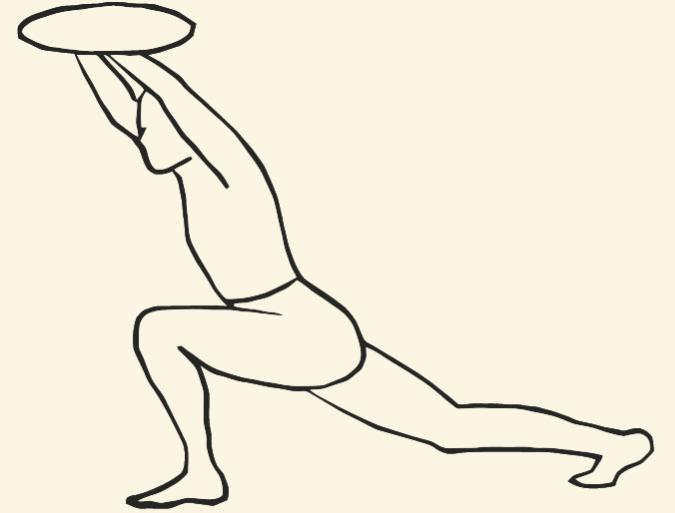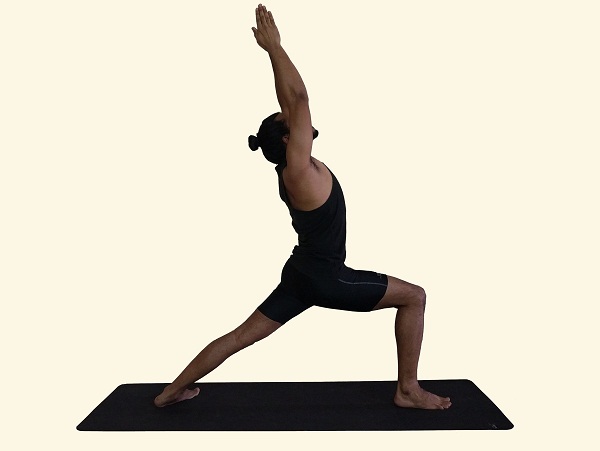Vir-bhadra-asana 1, the gracious warrior (vir- courageous, warrior; bhadra- gracious). These are the characteristics of a true warrior. The gracious warrior doesn’t instigate fights, but when required, is able to defend and act with what is required of them. This is their Dharma. It doesn’t necessarily refer to a physical fight, maintaining self-control and de-escalating a situation can require just as much strength.
There are various situations when we need our warrior spirit
- Life decisions – There is a fight going on between the mind and the heart. The mind operates on imagination fueled by emotions, fears, and hopes “what if?”. The heart, if you listen, operates on your dharma (true nature, inner calling, purpose).
- Speaking the truth – It can be difficult to speak truthfully when you fear the reaction of the audience. Sometimes some bitter honesty is required, but the line between honesty and cruelty is not always obvious. Fear of your intention being misinterpreted can cause you to remain silent, but this often has worse repercussions later on.
- Battling your ego – It’s easy to find the fault in another person, but difficult to find the faults in yourself. The ego resists this kind of humiliation, and this often leads to fights with others. Even if you can understand where you may have been wrong, the ego finds it difficult to accept. This inner battle with the ego is how to train the humility of the warrior.
- Handling your emotions – Anger can hijack you, and make you do things that you regret. Being able to create a distance between yourself and your anger will teach the self-discipline of the warrior spirit. Learning why you allowed yourself to become triggered, is the way that you can shift and better prepare for similar situations in the future. Just as the warrior trains to prepare for battle.
All three warrior postures originate in martial arts. The Warrior-I could be a person holding a sword up ready to strike, or a shield held up to protect them from an almighty blow (see sketch below). To find out the more about the martial arts equivalent of other warrior postures read the other articles in this series (link at the bottom of the page)

Warrior-1 posture works on our foundation, the legs (root chakra). The more is our legs rooted and pushing the ground the more power we can generate, for almost everything we need the legs, if you want to push a heavy object you need to push your feet into the ground first. Apply the same concept to this posture, engage your toes and foot to push the ground and take that power/force generated up to your spine and the hands, Imagine you are holding a sword or a shield with two hands and are ready to strike or absorb the blow.
Some people might find it difficult to take transfer this power to the hands because of a blockage in the upper back and shoulders. (check out postures to open the upper back and shoulders).

Steps
- Start with the equal standing position.
- Jump or move your left foot sideways so your feet are about four feet apart (this distance might also depend on the flexibility).
- Inhale turn your left foot 90 degrees to the left and position your right foot about 45 degrees to the left and bring both hands up join the palm and look to the thumb.
- Exhale rotate your torso to the left (trying to square the hips), and bend your knee.
- Make sure that the knee is directly above your ankle and work on making the thigh parallel to the floor.
- Work on bringing the arms back by opening the chest.
- Stay here for a few breaths. Inhale straighten the knee and repeat the same on the other side.
Benefits
- Stretches the chest and lungs, shoulders and neck, belly, groins (psoas)
- Strengthens the shoulders and arms, and the muscles of the back
- Strengthens and stretches the thighs, calves, and ankles
- Balances the root chakra (muladhara chakra)
Contraindications/ Precautions
- Knee injury/problems
Next posture in the series Virbhadrasana 2, warrior 2.
If you are looking for any other posture, check our posture library